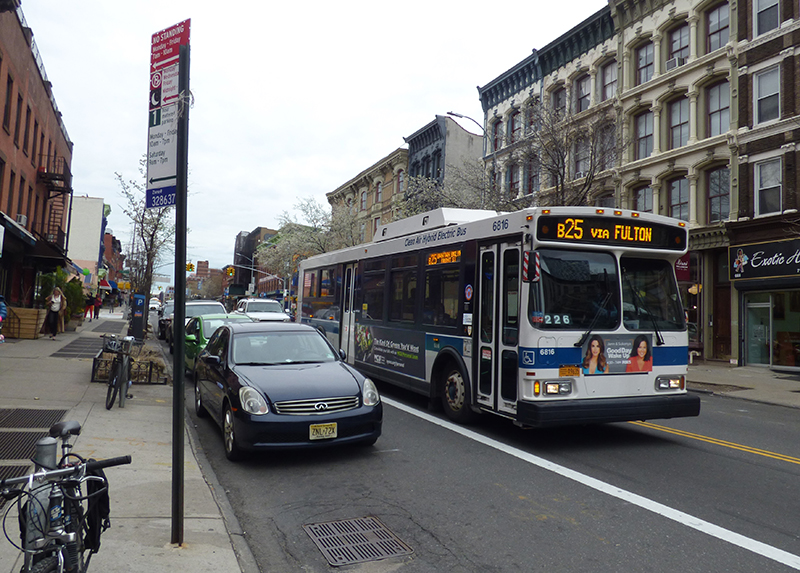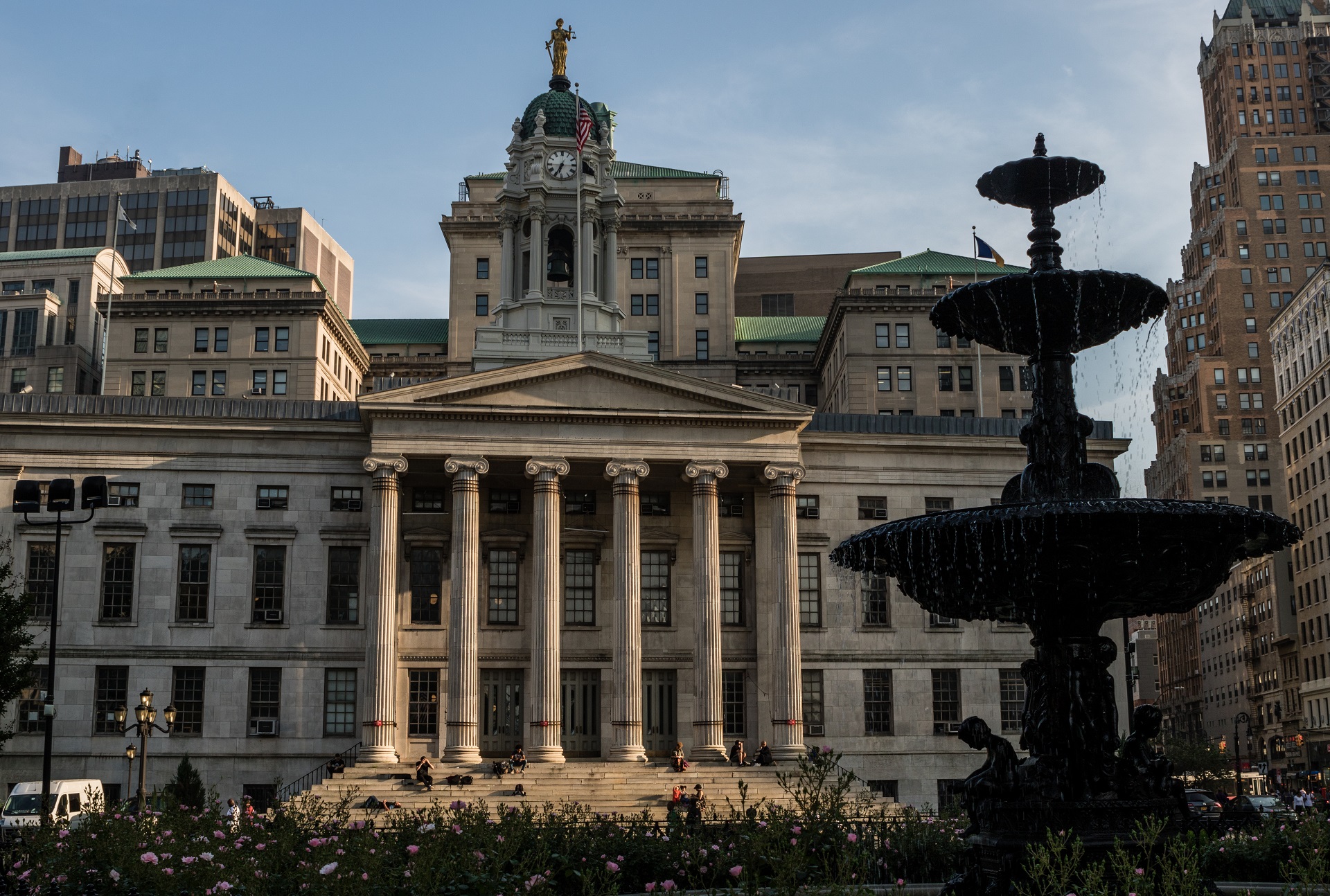NYC unveils plans to speed up buses — the slowest in the U.S.
Brooklyn bus route singled out for improvements

The mayor singled out the bus route on Livingston Street from Boerum Place to Flatbush Avenue. Eagle file photo by Mary Frost
New York City buses are the slowest in the United States, averaging 8 miles per hour — and even slower during peak times.
With ridership dropping 13 percent over the last four years, the city has come out with a Better Buses Action Plan it says will increase bus speeds by 25 percent by 2020.
Part of Mayor Bill de Blasio’s 2019 OneNYC plan, it includes a package of road changes, technology improvements, pedestrian priority zones and off-hour delivery requirements.
